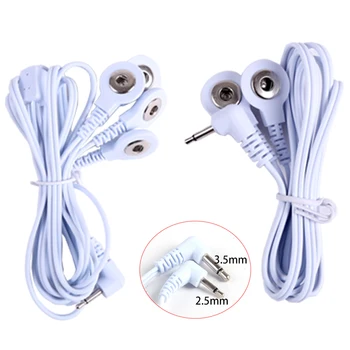Shop this story
Improving Instructional Design for Attitudinal Change

Reflecting and Improving Instructional Design for Attitudinal Change

Attitudinal change in education requires thoughtful instructional design that not only presents content but also engages learners effectively.
Evaluating, reflecting, and improving instructional strategies are essential processes that ensure educational experiences lead to meaningful attitudinal shifts.
This article explores how to evaluate the efficiency of instructional design strategies, reflect on personal practice and growth as an instructional designer, and apply feedback to enhance instructional design continuously.
1. Evaluating the Efficiency of Instructional Design Strategies
Evaluating the effectiveness of instructional design strategies is crucial for determining whether educational objectives, particularly those related to attitudinal change, have been achieved.
Strategies for Evaluation:
– Formative Assessments: Utilizing formative assessments throughout the instructional process allows educators to gauge student understanding and attitudes in real-time.
Techniques such as quizzes, surveys, and reflective journals can provide immediate insights into student attitudes and learning progress.
– Summative Assessments: At the end of an instructional period, summative assessments can evaluate overall learning outcomes.
Analyzing the results of these assessments helps determine whether attitudinal changes occurred and if the instructional strategies were effective.
– Student Feedback: Soliciting feedback from students about their experiences can provide valuable insights.
Using tools like feedback forms or focus group discussions can yield constructive input regarding the effectiveness of specific instructional methods in facilitating attitudinal change.
– Peer Review: Engaging colleagues in peer evaluations offers diverse perspectives on instructional design effectiveness. Collaborators can provide critical assessment and constructive feedback, highlighting strengths and areas for improvement.
Key Performance Indicators
– Participation Rates: Track student engagement during lessons and activities. Increased participation can indicate successful attitudinal engagement.
– Behavioral Changes: Observe shifts in student behavior, such as collaboration, respectful discourse, or active participation in discussions on sensitive topics.
– Reflection on Attitudes: Analyze student reflections to identify changes in perceptions related to the instructional material.
2. Reflecting on Personal Practice and Growth as an Instructional Designer
Reflective practice is a vital process in instructional design that encourages continual improvement and professional growth.
By reflecting on personal experiences and outcomes, instructional designers can refine their methods to better support attitudinal change.
Steps for Reflective Practice
1. Regular Self-Assessment: Take time to evaluate your instructional design practices, noting what worked well and what could be improved.
Consider keeping a reflective journal where you document lessons learned after each instructional session.
2. Set Personal Goals: Define specific, measurable goals for your growth as an instructional designer.
For example, you may set a goal to integrate more technology or diversify instructional strategies.
3. Seek Professional Development: Participate in workshops, webinars, and training sessions related to instructional design, pedagogy, and strategies for promoting attitudinal change.
4. Engage with Communities of Practice: Joining professional organizations or online communities can open doors to shared experiences and resources, fostering growth and networking with other professionals in the field.
Reflective Questions
– What strategies facilitated attitudinal change effectively in my classroom?
– How do I respond to challenges in student engagement or resistance to attitudinal shifts?
– Which instructional design decisions had the most significant impact on student attitudes?
3. Applying Feedback and Making Revisions to Improve Instructional Design
Feedback is a crucial component of the instructional design process, providing actionable insights that can guide revisions and improve future instruction aimed at attitudinal change.
Applying Feedback
1. Analyze Collected Data: Review the feedback and data gathered from formative and summative assessments, student reflections, and peer evaluations. Identify common themes and specific areas for improvement.
2. Prioritize Changes: Not all feedback will warrant immediate action. Prioritize changes based on their potential impact on student attitudes and learning outcomes.
Focus on adjustments that align with your established goals for attitudinal change.
3. Collaborative Revisions: Engage with colleagues to brainstorm and discuss possible revisions. Collaborative discussions can lead to innovative solutions and approaches that might not have been considered independently.
Making Revisions
1. Iterate on Instructional Materials: Adjust lesson plans, resources, and activities based on identified needs.
For instance, you may incorporate more interactive elements if feedback indicates that students find lectures less engaging.
2. Diversify Instructional Strategies: Experiment with different methods based on feedback. Consider integrating more group work, case studies, or multimedia resources to enhance engagement and promote attitudinal change.
3. Continuous Improvement Cycle: Implement a cycle of continuous improvement where you regularly assess, reflect, apply feedback, and make changes to your instructional design.
This cycle fosters an adaptive learning environment that evolves to meet student needs.
Conclusion
Reflecting on and improving instructional design for attitudinal change is a dynamic and ongoing process.
By systematically evaluating the effectiveness of instructional strategies, engaging in reflective practice, and applying feedback for revisions, educators can create meaningful learning experiences that lead to positive attitudinal shifts.
This commitment to continuous improvement not only enhances instructional effectiveness but ultimately empowers students to engage thoughtfully with their learning and the broader community.
As you implement these strategies, remember that the ultimate goal is to cultivate informed, empathetic, and engaged citizens ready to contribute positively to society.
Shop With Us
Further reading
- Afghan afghani (؋)
- Albanian lek (L)
- Algerian dinar (د.ج)
- Angolan kwanza (Kz)
- Argentine peso (ARS $)
- Armenian dram (AMD)
- Aruban florin (Afl.)
- Australian dollar ($)
- Azerbaijani manat (AZN)
- Bahamian dollar ($)
- Bahraini dinar (.د.ب)
- Bangladeshi taka (৳ )
- Barbadian dollar ($)
- Belarusian ruble (Br)
- Belize dollar ($)
- Bermudian dollar ($)
- Bhutanese ngultrum (Nu.)
- Bolivian boliviano (Bs.)
- Bosnia and Herzegovina convertible mark (KM)
- Botswana pula (P)
- Brazilian real (R$)
- Brunei dollar ($)
- Bulgarian lev (лв.)
- Burmese kyat (Ks)
- Burundian franc (Fr)
- CFP franc (Fr)
- Cambodian riel (៛)
- Canadian dollar ($)
- Cape Verdean escudo ($)
- Cayman Islands dollar ($)
- Central African CFA franc (CFA)
- Chilean peso (CLP $)
- Chinese yuan (¥)
- Colombian peso (COP $)
- Comorian franc (Fr)
- Congolese franc (Fr)
- Costa Rican colón (₡)
- Croatian kuna (Kn)
- Cuban convertible peso (CUC$)
- Cuban peso (CUP ₱)
- Czech koruna (Kč)
- Danish krone (DKK)
- Djiboutian franc (Fr)
- Dominican peso (RD$)
- East Caribbean dollar ($)
- Egyptian pound (EGP)
- Eritrean nakfa (Nfk)
- Ethiopian birr (Br)
- Euro (€)
- Falkland Islands pound (£)
- Fijian dollar ($)
- Gambian dalasi (D)
- Georgian lari (ლ)
- Ghana cedi (₵)
- Gibraltar pound (£)
- Guatemalan quetzal (Q)
- Guernsey pound (£)
- Guinean franc (Fr)
- Guyanese dollar ($)
- Haitian gourde (G)
- Honduran lempira (L)
- Hong Kong dollar ($)
- Hungarian forint (Ft)
- Icelandic króna (kr.)
- Indian rupee (₹)
- Indonesian rupiah (Rp)
- Iranian rial (﷼)
- Iraqi dinar (ع.د)
- Israeli new shekel (₪)
- Jamaican dollar ($)
- Japanese yen (¥)
- Jersey pound (£)
- Jordanian dinar (د.ا)
- Kazakhstani tenge (KZT)
- Kenyan shilling (KSh)
- Kuwaiti dinar (د.ك)
- Kyrgyzstani som (сом)
- Lao kip (₭)
- Lebanese pound (ل.ل)
- Lesotho loti (L)
- Liberian dollar ($)
- Libyan dinar (ل.د)
- Macanese pataca (P)
- Macedonian denar (ден)
- Malagasy ariary (Ar)
- Malawian kwacha (MK)
- Malaysian ringgit (RM)
- Maldivian rufiyaa (.ރ)
- Manx pound (£)
- Mauritian rupee (₨)
- Mexican peso (MXN $)
- Moldovan leu (MDL)
- Mongolian tögrög (₮)
- Moroccan dirham (د.م.)
- Mozambican metical (MT)
- Namibian dollar ($)
- Nepalese rupee (₨)
- Netherlands Antillean guilder (ƒ)
- New Taiwan dollar (NT$)
- New Zealand dollar ($)
- Nicaraguan córdoba (C$)
- Nigerian naira (₦)
- North Korean won (₩)
- Norwegian krone (kr)
- Omani rial (ر.ع.)
- Pakistani rupee (₨)
- Panamanian balboa (B/.)
- Papua New Guinean kina (K)
- Paraguayan guaraní (₲)
- Polish złoty (zł)
- Pound sterling (£)
- Qatari riyal (ر.ق)
- Romanian leu (lei)
- Russian ruble (₽)
- Rwandan franc (Fr)
- Saint Helena pound (£)
- Samoan tālā (T)
- Saudi riyal (ر.س)
- Serbian dinar (дин.)
- Seychellois rupee (₨)
- Sierra Leonean leone (Le)
- Singapore dollar ($)
- Peruvian nuevo sol (S/.)
- Solomon Islands dollar ($)
- Somali shilling (Sh)
- South African rand (R)
- South Korean won (₩)
- South Sudanese pound (£)
- Sri Lankan rupee (රු)
- Sudanese pound (ج.س.)
- Surinamese dollar ($)
- Swazi lilangeni (L)
- Swedish krona (kr)
- Swiss franc (CHF)
- Syrian pound (ل.س)
- Tajikistani somoni (ЅМ)
- Tanzanian shilling (Sh)
- Thai baht (฿)
- Tongan paʻanga (T$)
- Trinidad and Tobago dollar ($)
- Tunisian dinar (د.ت)
- Turkish lira (₺)
- Turkmenistan manat (m)
- Ugandan shilling (UGX)
- Ukrainian hryvnia (₴)
- United Arab Emirates dirham (AED)
- United States dollar ($)
- Uruguayan peso ($U)
- Uzbekistani som (UZS)
- Vanuatu vatu (Vt)
- Vietnamese đồng (₫)
- West African CFA franc (CFA)
- Yemeni rial (﷼)
- Zambian kwacha (ZK)
- HT Mall
- Start Here
- Smart Shop (465)
- Smart Devices (8)
- Smart Health (21)
- Privacy Policy
- Shop Here (465)
- Human Hair (21)
- Smart Phones (64)
- Network Devices (18)
- Smart Watches (17)
- Smart Games (6)
- Smart Nail Care (7)
- Kitchenware (11)
- Phone Accessories (15)
- Smart Razors (2)
- Car Accessories (53)
- Smart Kid (10)
- Smart Devices (49)
- Smart Phones (64)
- Smart Massagers (29)
- Phone Accessories (15)
- Slim Fit (18)
- Smart Lights (7)
- Anti Aging (5)
- Books (3)
- Smart Hair Care (3)
- Smart Routers (1)
- Smart Security (8)
- Track your order
- Earn with Us
- WT Consult
- HT Blog
- Wishlist –















Leave a comment